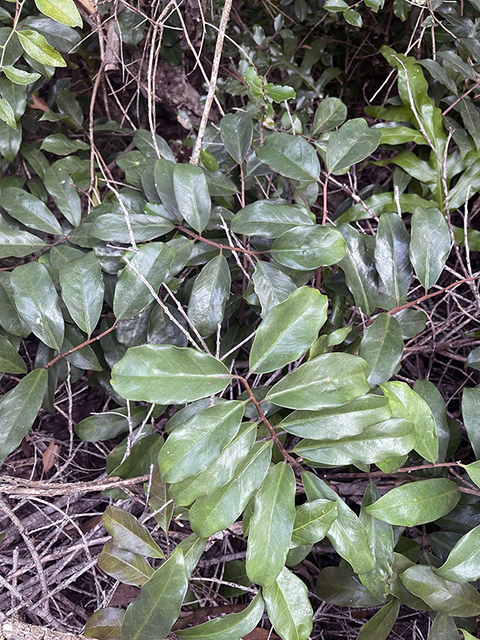When the snow starts falling and winter is at its worst, I enjoy having green plants in my home office. One of my favorites is a humble ZZ plant (Zamioculcas zamiifolia).
Basic ZZ plant care
Also called Zanzibar gem or Zee Zee plant, it is easy to find them in garden stores. It enjoys indirect sun, rarely needs fertilizer, and can handle not being watered for very long periods of time. You can wait to water it until the soil gets completely dry.
An odd-looking plant with shiny leaves, a ZZ plant can confuse folks into thinking it is made of plastic. Author Jonny Sun says about this plant that “to stay alive while being thought of as something that does not show any signs of life, means it is doing something right.” Everybody seems to have a story about a ZZ plant that was abandoned and somehow gets revived. People who like to tell you how bad they are at raising plants may say they killed one, but almost all the time it is because they spent too much time babying it (i.e., overwatering).
Adaptations to dry soils
Wild ZZ plants grow in shady forests in southeastern Africa, particularly in eastern South Africa and southern Mozambique. These places tend to be drier, are not too sunny, and often have sandy soils.
ZZ plants have thick roots. These are rhizomes, a type of stem that stays underground. Its rhizomes are very thick, almost like a potato, and help to store water for dry periods.
Waxy coatings on its leaves also help it avoid water loss, and the shine from those coatings adds to its appeal. The ZZ plant uses the same water-saving photosynthesis as cacti and other succulents. This means it only absorbs carbon dioxide at nighttime, closing its pores during daylight and preventing moisture escape in a dry and hot climate.
Wild ZZ plants look a bit different from the houseplant varieties. They have more space between each leaf and the leaves are droopier. They look somewhat like Solomon's seal (Polygonatum sp.) that you can see in the springtime here in Minnesota.
ZZ plant mysteries
ZZ plants have clubby flowers, like peace lilies (Spathiphyllum spp.) or jack-in-the-pulpit (Arisaema triphyllum). All three of these plants are part of the Araceae (arum) family.
Often, the ZZ plant needs to be about two years old before you see any blooms, and even then, flowers can be rare. A ZZ plant’s flower droops a bit and is low to the ground. One reason could be that the pollen attracts beetles or flies, which may be the main pollinators for the species.
Wild ginger (Asarum canadense), which also has low-to-the-ground flowers, is another probable fly and beetle-pollinated plant that you might see in Minnesota.
I was not able to find much information on whether ZZ plants could produce viable seeds through any type of pollination. Most studies assume ZZ plants spread through their rhizomes. You can also propagate ZZ plants by snipping their leaves and rooting them in a moist, well-drained potting mix.
Michigan State Extension has an excellent resource if you are interested in propagating on a larger scale. Keep that in mind before you shell out big bucks for a ZZ plant. A large ZZ plant can sell for more than $100.
Blanchard, M. and Lopez, R. (2007). ZZ plant is an excellent choice for tough indoor use. Michigan State University Extension. https://www.canr.msu.edu/resources/zz-plant
Chen, J., & Henny, R. J. (2003). ZZ: a unique tropical ornamental foliage plant. HortTechnology, 13(3), 458-462.
Chouteau, M., Gibernau, M., & Barabé, D. (2008). Relationships between floral characters, pollination mechanisms, life forms, and habitats in Araceae. Botanical Journal of the Linnean Society, 156(1), 29-42.
Holtum, J. A., Winter, K., Weeks, M. A., & Sexton, T. R. (2007). Crassulacean acid metabolism in the ZZ plant, Zamioculcas zamiifolia (Araceae). American journal of botany, 94(10), 1670-1676.
Mucina, L., Geldenhuys, C. J., & Rutherford, M. C. (2006). Afrotemperate, subtropical and azonal forests. The vegetation of South Africa, Lesotho and Swaziland. Strelitzia, 19, 584-614.
Sun, J. (2021, December 7). #13. ZZ plant (Zamioculcas zamiifolia). A small list of knowable things. https://jonnysun.bulletin.com/13-zz-plant





